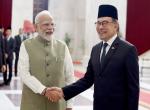In India at least since the British came to rule us it is the State which took upon itself the responsibility for providing health care. In 1925 in the undivided province of the Punjab Sir Fazl-i-Husain scheme for health care was initiated. The broad aim of the scheme was that there should be a civil dispensary for every hundred square miles of territory and no villagers need have to go more than five miles to find state provided medical help. Our primary health care system provides for one primary health centre for every thirty thousand population (twenty thousand in tribal areas) and one subsidiary health centre for every five thousand population (three thousand in tribal areas). This is only something built on the 1925 scheme. Looking at the Gazetteer of Attock District (now in Pakistan) for the year 1930 one finds that apart from the district hospital at the headquarters, Campbellpur, there were five civil hospitals, five civil dispensaries, three municipal hospitals and seventeen rural dispensaries. It was planned that by the end of 1930 there would be seven government hospitals and twenty-three such dispensaries all over the district. Going back to the 1883-84 gazetteer of Montgomery District (now in Pakistan) one finds that even as early as that there was a district hospital and five smaller hospitals in the district.
Coming away from British India we have the example of Gondal State in Gujarat. Sir Bhagvat Sinhji became the Ruler of Gondal in 1884. Gondal was a small State in terms of area, but it was a very modern State in terms of infrastructure. For example, as early as in 1917 the Maharaja decided that in his State education for girls would be free and compulsory, though not for boys. His view was that if the girl child was educated the children she would have as an adult would imbibe education and culture from her and, therefore, to educate the girl meant uplifting the whole family. His efforts were successful. It is but natural that such a Ruler, himself a FRCS from Edinburgh, should give great attention to medical care in his State. He upgraded the two existing hospitals in Gondal State to first class status and built four new hospitals apart from a number of dispensaries. The medical coverage was such that when in Bombay Presidency there was one medical facility for over thirty thousand population covering an area of 166 square miles, in Gondal the ratio was fifteen thousand persons and ninety-three square miles. Epidemics were kept in control through medical treatment, but more important, through vaccination, sanitation and protected water supply.
Why this delving into the past? The objective of this is to establish firmly that in India health care of the citizens is one of the primary responsibilities of the State. In Britain it is the post Second World War National Health Service which gave to the State the duty of providing universal health care. But in India the history of State health care is much older. Fortunately Article 47 of the Constitution fortifies the axiom that the health of all is the responsibility of the State. Lest one is unaware of the constitutional directives Article 47 is reproduced below. It reads, “The State shall regard the raising of the level of nutrition and standard of living of its people and the improvement of public health as among its primary duties….” The Chambers Twenty-first Century Dictionary defines ‘primary’ as under: - “First or most important; principal; earliest in order of development”. The same dictionary defines duty as, “something one is or feels obliged to do; a moral or legal responsibility”. Therefore, it is the moral and legal responsibility, the most important responsibility of the State to ensure that public health is promoted and that every single citizen, regardless of status has access to health care of high quality. There is no way in which the State can escape its responsibility in this behalf.
How has the State gone about its task? On paper there is a hierarchy of medical institutions, with the primary health centres and the subsidiary health centres as the base. Above them in the hierarchy are community level hospitals, district hospitals and hospitals attached to medical colleges. There are hospitals specialising in particular types of diseases, including cancer hospitals. Within the system the government runs various clinics which specialise in their own branch of medicine and certainly the medical colleges and their hospitals are supposed to provide health care, diagnostic, clinical, medical and surgical, in a wide range of medical disciplines. Treatment in all government hospitals is required to be free, totally for the indigent, partially for the normal run of citizens and fully paid for in the case of the more affluent patients. No one can be turned away from a government hospital because he cannot afford treatment.
In addition to the government hospitals India did have a few good private hospitals also such as the Breach Candy Hospital in Bombay. The Christian Medical College and Hospital at Vellore and at Ludhiana are good examples of hospitals set up by Christian charity which provided and continue to provide the highest quality of medical care. The Satya Sai Hospital at Puttaparthy is another good example of a religious group establishing a top class hospital. As liberalisation became the key word in the Indian polity private medical institutions have mushroomed and now there are a large number of private medical colleges and hospitals in the cities of India. The most outstanding of these is the Manipal Group, whose hospitals are all located in a semi rural environment. As private clinics and hospitals grew in numbers a parallel medical care system developed in which the affluent increasingly went towards the private medical institutions. Today we have groups such as Apollo, Fortis, Hinduja, etc., who have established very fine hospitals in the larger cities where medical care equals the best in the world—but only to those who can afford it. The average citizen has to fall back either on B grade private medical facilities or resort to government hospitals.
In a country where the number of persons who can afford expensive health care is less than double digit as a percentage of the whole it was expected that as private medical facilities grew the State medical facilities would improve further so that the poor can get the same quality of health care as the rich who go to a Fortis or an Apollo facility. Nothing of the sort has happened and except for some institutions like the AIIMS, PGIMER Chandigarh and JIPMER Pondicherry, the standard of government hospitals has fallen. This is true even of the medical college hospitals. The equipment status of many of these hospitals is obsolete, there are a number of vacancies in medical staff, new recruitment is tardy or nonexistent, doctors and nursing staff are overloaded with work, there is a great deal of political interference and even the graduates of many of these medical colleges seek employment outside the State sector. At the district, community and block levels there is great paucity of doctors and many primary health centres and subsidiary centres are unmanned. One could make so bold as to say that the standard of rural health care has fallen over the years instead of improving.
Why has this happened? One obvious suspect is the nexus between the politicians and private hospitals which has resulted in a complete lack of interest of government in running their own hospitals while encouraging private hospitals to grow at a fast rate. No more pernicious formula has ever been devised than Montek Singh Ahluwalia’s PPP mode (Public Private Participation). In the past government hospitals were supposed to be complete in themselves in the matter of diagnostic and clinical facilities and hospitalised treatments of patients, surgery and after care. Now a great deal of the diagnostic work is made over to private diagnosis clinics in which the doctor running the clinic and the government doctor referring the patients to the clinic share the fees earned from patients. Government facilities are allowed to run down so that they do not function. The patient, who can hardly afford health care, is now subjected to the dual burden of having to pay heavily for diagnostic tests and then being given substandard treatment in a government hospital. Obviously the objective is to drive the patient away from government hospitals so that private medical facilities can flourish. This is a clear violation of the directives contained in Article 47 of the Constitution.
The Legislature has control over the medical budget. Why is it that our legislators accept stagnation in the budget and ask no questions about the quality of health care in government hospitals? This raises doubt that they are also partners in the evil design of many governments to cripple the State medical facilities through deliberate neglect and deliberate withholding of funds for improvement. That is why in a State such as Madhya Pradesh the doctors, who have the longest gestation period of any profession in terms of college years which have to be devoted to education, are poorly paid and have very few avenues of promotion. Poorly paid doctors can only lead to poor medical facilities for the average citizens.
Service in a primary health centre is not a bed of roses. The PHC is generally located deep in a rural area and the doctor and his family have very few facilities and almost no social life. That is why most young doctors shy away from a rural posting and the primary health system remains badly undermanned. In the past there was a three-year medical course which led to a LCPS Diploma. It is this diploma holder who was posted to rural dispensaries. He undergoes three years of rigorous medical training and though not a full fledged medical graduate, he learns enough to provide primary health care, do minor surgeries, dispense drugs and generally provide medical cover in rural areas. He would be willing to serve because with a Diploma he would not be able to find employment in an urban hospital. The licentiate, after five years of rural service, would qualify to take a two-year capsule course which would enable him to take a MBBS Degree. I remember that when I was a young SDO the doctor in the Sub Divisional Health Centre was an LCPS and the doctor in charge of one of the tehsil dispensaries was also a LCPS. Through years of experience and with a medical background they had become excellent doctors and were greatly appreciated by villagers covered by their dispensaries. Notwithstanding the objections of the Indian Medical Association and the Medical Council of India, government must restart the licentiate course so that trained medical personnel can be sent to the villages to provide primary health care. At the same time if the community level hospitals are strengthened and the district hospitals made into referral hospitals a hierarchy of health care ranging from the village up to the district headquarters would be provided for our citizens, the quality of which would be excellent.
Much of the private health care in the United States is covered by a well-developed medical insurance system. In India we need to develop a similar system so that from poorest to the richest people get insurance cover. The development of a private medical system must go hand in hand with development of medical insurance coverage. Then the government system and the private system will move forward in tandem. That should be our aim because therein lies equity and social justice.
Published Date : 13th January 2012









Post new comment